If you are planning to grow peppers in either a raised bed or a garden bed, you’ll want to make sure you have your pepper plant spacing right. Every plant needs a different amount of space to thrive.
Some vegetables need several feet between plants, like squashes and tomatoes. Others need just a few inches, like carrots and bush beans. Spacing between pepper plants will vary from one variety to another. So in this article, I’ll share our spacing suggestions for popular pepper types.
In short, peppers should be spaced at 18-24″ between plants, stem to stem. For larger varieties, more space may be beneficial for easy access while harvesting.
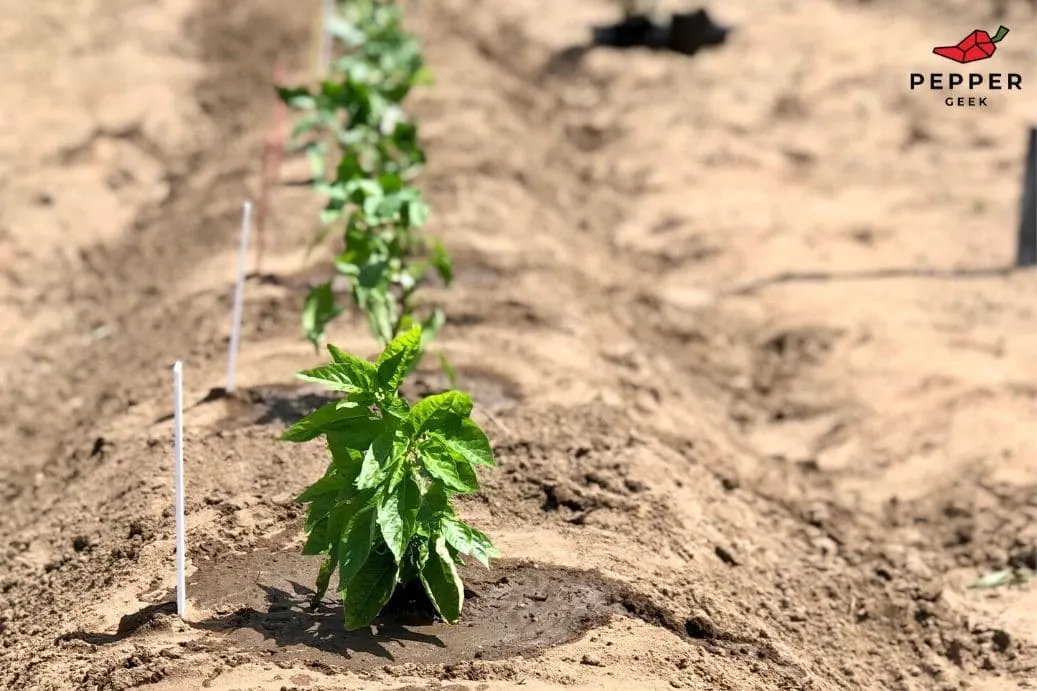
General Pepper Plant Spacing
Different pepper plant varieties have different growth patterns from others. Some tend to grow wide and bushy, while others grow tall and slender. Leaf sizes are also highly variable.
Generally speaking, if you are growing peppers from seed, they will likely not grow much taller than 3-4 feet during a single season. Many varieties will stay much smaller, while others can grow larger.
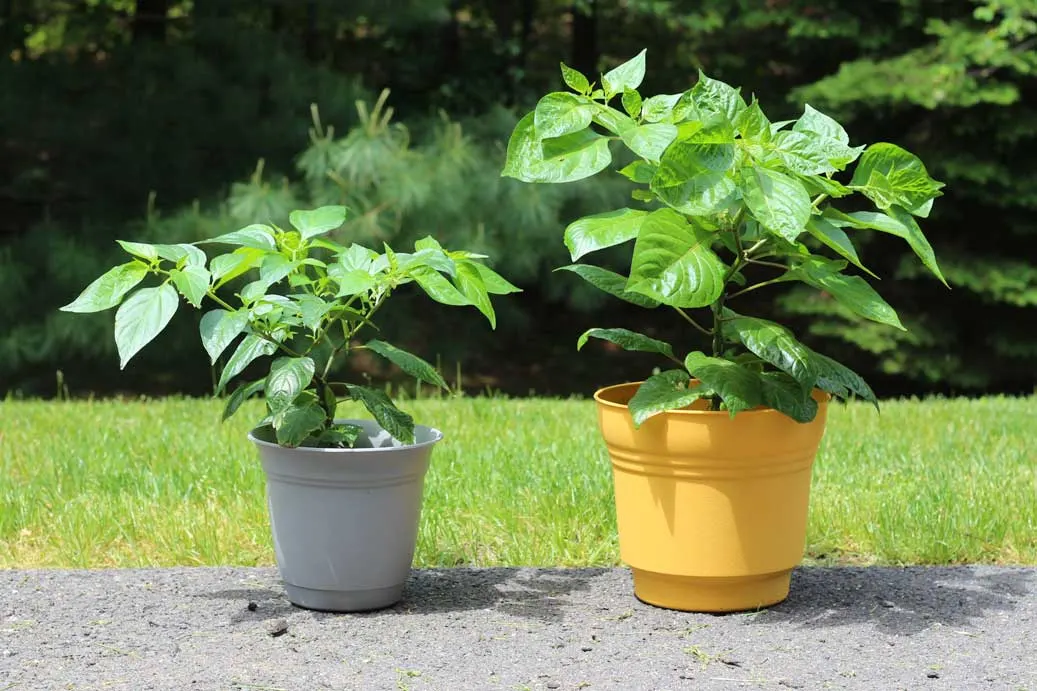
So, how much space do peppers generally need between plants? For most varieties, pepper plants should be spaced around 18″ (46 cm) between plants. Larger varieties can be given slightly more space, but will usually not need much more than 18 inches. This spacing will prevent the plants from competing for space both above and below ground.
We have experimented with spacing closer and farther apart, and have found 18″ to be the sweet spot for plant health and ease-of-access. If you space your plants any closer, they may compete for light and root space. Overly-tight spacing also restricts airflow which can cause other issues with your pepper plants.
Since peppers self-pollinate, you can space peppers as far away from one another as you like. These spacing guidelines are meant to maximize your garden space.
Bell Pepper Plant Spacing
Bell peppers are among the largest pepper varieties, and also the most commonly grown. The plant’s leaves are broad, and plants can grow quite tall, easily 4 feet or taller in one season. However, they tend to be slender rather than wide and bushy, so they may not take up as much lateral space as you might expect.
With that said, you should give your bell peppers plenty of space to produce. We recommend spacing bell peppers at 18 inches (46 cm) between plants. Though the plants are usually slim, the root systems can be extensive, requiring a bit of extra space. We prefer to be on the safe side to maximize our pepper yields.
Don’t space your bell peppers too far apart! Having neighbors nearby is helpful for bell peppers. They provide added shade for the fruits to avoid sun scalding on the pepper’s skin as they grow and mature.
Bell peppers can also be grown vertically (like trellised tomatoes). In this case, you can space the plants even closer, around 12-14″ between plants, pruning off side shoots throughout the growing season. Keep in mind that your plants will end up growing much taller (often 6 feet or more), and will require support on a vertical stake or trellis.
Jalapeño Plant Spacing
Another popular pepper to grow at home, the jalapeño is a smaller pepper than the bell pepper. However, the plants can grow as big (or bigger) than bell peppers.
We recommend spacing jalapeno plants at 18-24 inches (46-60 cm) between plants. You may give them more space if desired, but the plants should produce optimally at around 18 inches.
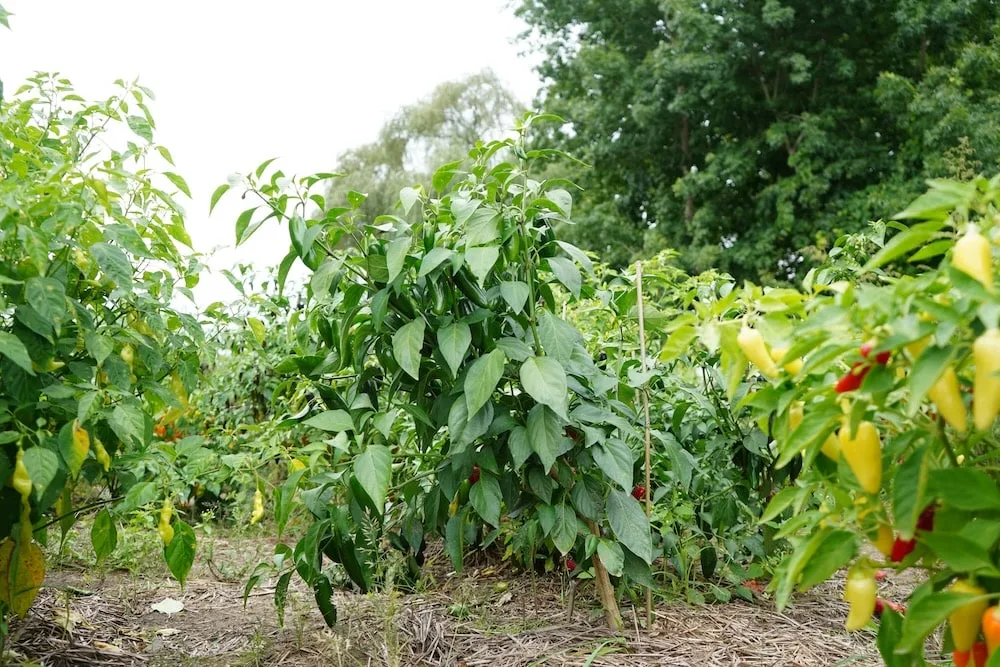
Jalapeños are part of the Capsicum annuum species, along with banana peppers, poblanos, bells, serranos and many others. These plants tend to be a bit less bushy when mature, thus an 18-24 inch spacing will work for all of them.
Habanero Plant Spacing
The Capsicum chinense varieties can grow to be much, much larger than C. annuum types. These pepper types include habanero, ghost pepper, 7 pot, scotch bonnet, and many other superhot peppers.
For the habanero-type peppers, we recommend at least 18 inches, and up to 24 inches for easier access during harvest and plant care. This spacing will allow the plants to reach a mature size of 4-5 feet wide in a single season!
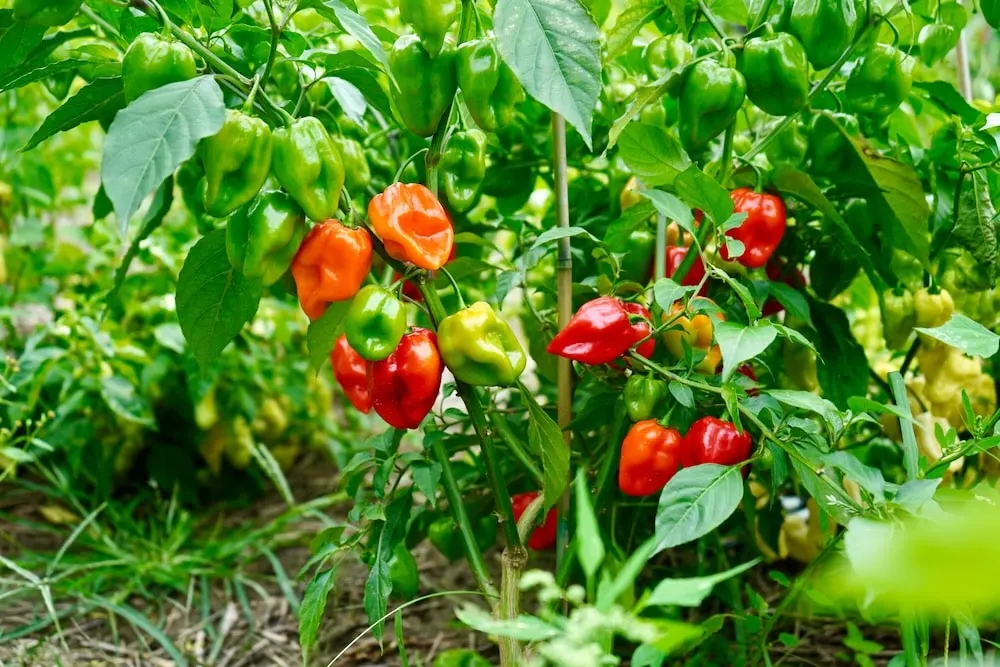
Keep in mind that, by spacing closer, your pepper plants will help shade the ground below, preventing weeds from growing. Spacing correctly also makes the best usage of your garden plot.
If you have an especially long growing season (tropical zones), then you may wish to add space between your habanero-type plants. This will give the plants enough room to mature and grow bushy with the extra growing season.
What To Plant Near Peppers
Perhaps just as important as pepper plant spacing are plant companions. We wrote an article dedicated to this topic, but here are a few great options for what to plant near your peppers.
- Flowers. Alyssum, zinnias, cosmos, and marigolds can all help keep your peppers happy throughout the growing season. They do this by attracting beneficial insects, and in some cases luring pests away from your pepper plants.
- Basil. We absolutely love growing and cooking with basil. There are a ton of different varieties to choose from, each with a unique flavor, aroma, and even color. Basil is also a great companion for tomatoes and other garden veggies.
- Chives. Another easy-to-grow herb, chives are happy to be planted nearby your pepper plants. They don’t grow too tall and can help deter certain types of flies. Keep in mind that chives are perennial in most zones.
- Garlic. You may think that growing garlic would be difficult, but it is one of the easiest crops to grow. If you have a fresh, organic garlic bulb, you can use it to grow more garlic. It is a great companion for most plants, and a culinary treasure.
- Rosemary. Another fragrant and delicious herb, rosemary is a staple in our kitchen. It grows well and is very hardy throughout the season.
- Tomatoes. Though this may be debated by gardeners, we always have a few tomato plants nearby our pepper garden. We recommend rotating where the tomatoes are planted each year to avoid potential pathogen or pest issues.
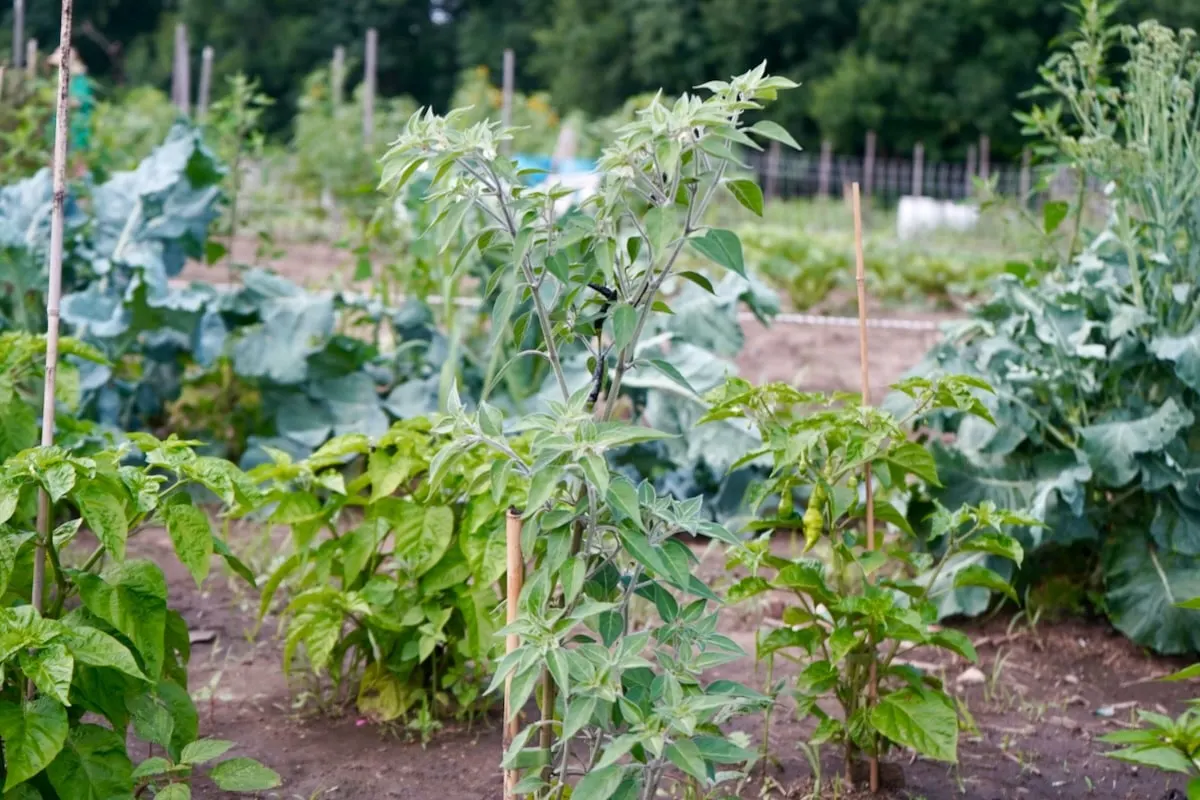
Related:
I hope you found this article useful for your pepper plant spacing in the garden this season. Let us know if you have experimented with different spacing distance and how it worked for you. Thanks for reading!
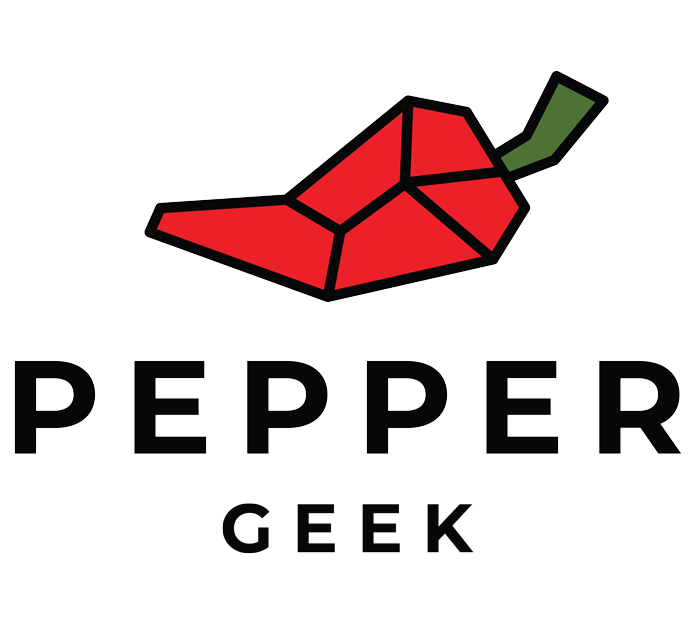

Kanyankore Richard
Friday 29th of December 2023
Thanks for supporting us. We appreciate.
unisa kamara
Monday 22nd of May 2023
just want to know from you someone on youtube says spacing should be 1 meter apart
Cruz
Sunday 21st of May 2023
I plant my peppers about 9-10" apart and I have had great success with them. I don't notice a significant difference in yield between wider spacing. I do, however, make sure to alternate very large varieties like ghost with smaller and lower growing types like chiltepin. I also slightly stagger them so the smaller varieties are a little bit further south than the taller ones. I fit 34 plants into a space about 20'x3'.
The peppers end up leaning on each other for support, and I can do a short Florida weave instead of individual stakes/cages for support. Straw mulch, aspirin spray, and organic fertilizer at planting and about halfway into summer makes for an easy and super productive season.
David Niemi
Monday 23rd of May 2022
There is quite a big of variation in size and growth habit of pepper plants, even within each species. C. Annuum tends to have a slender plant both above and below the ground and is usually under 4' tall. Some varieties like Cayenne have small leaves and a sparse habit, and work well having 2 peppers growing in the same space. C. Baccatum tends to grow quite tall, 4' - 8'. C. Chinense tends to be 3' - 5' high and tend to be very broad both above and below ground.
There are C. Annuum varieties with small to medium-sized pods, that grown on quite small bushes, only 1' - 2' high and not very broad either. These varieties grow and ripen quickly, are well-suited for containers, and can be grown in-ground with much tigher spacing. In this group I'd include Matchbox/Super Chili/Rooster Spur; Hinkelhatz; Bulgarian Carrot (also all fairly hot).
peppergeek
Tuesday 24th of May 2022
Thanks for sharing your experience with the different species - very useful!
Norm
Thursday 19th of May 2022
18" spacing between plants (stem to stem)? Most peppers, many peppers, many sources say average pepper size is 24" wide...excluding dwarfs. At 18" spacing, the plants would be growing together; 6" into each other.
I tried to crowd more peppers in using smaller spacing and hated the results...more diseases, more pests, and just not worth the few extra plants.
I tell folks that ask at our nursery to ignore advice in all the pop media gardening sites for 18" spacing, and that they will have more success and better results with 24". I've never had one come back and complain about wasted space.
Even one university site I was on said most bell pepper plants will have a width of anywhere from 18 to 24 inches....then recommended planting 18" apart!! That left me scratching my head, for sure!! LOL!
You may want to revise your distancing OR add a paragraph explanation/caveat!